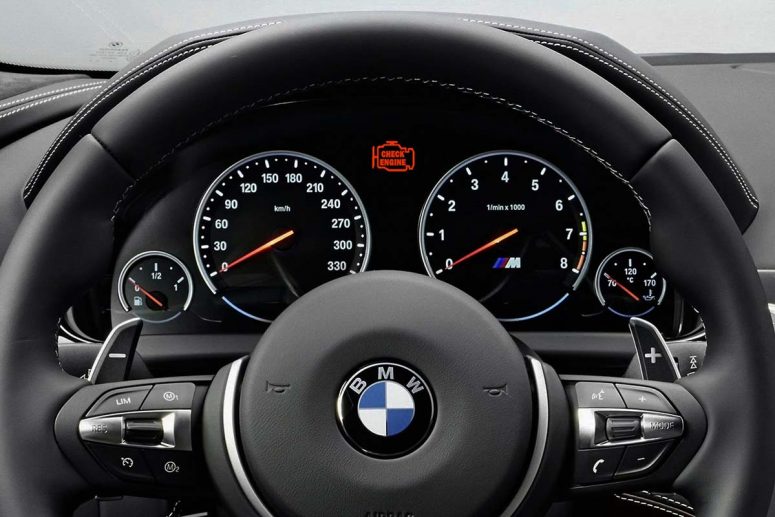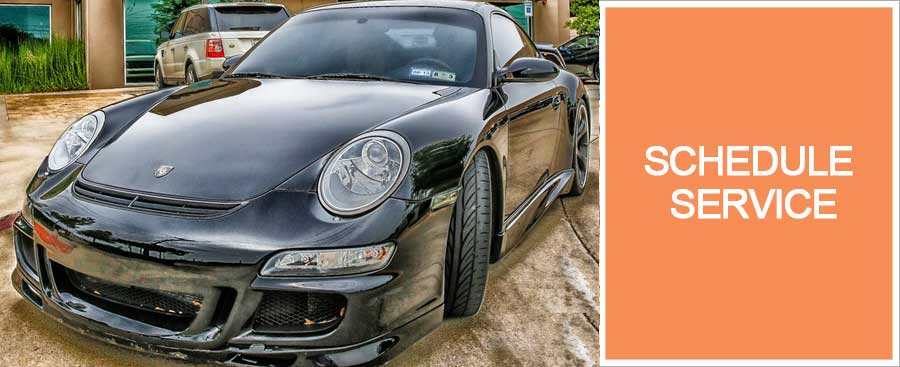Is there a difference between the check engine light and a service engine soon light?
The check engine light and service engine soon light are often mistaken for one another and many are confused as to what they each mean. Though they seem similar, we’ll explain just how different they actually are.
Written by: Bradley Hayes
Automotive Blogger & Director of Marketing, Autoscope European Car Repair
Technology in cars has come a long way since Karl Benz first introduced his Benz Patent Motorwagen. In fact, it should come as no surprise that in today’s computer-driven world, computers are all-but driving our cars. They control and monitor the performance of your vehicle’s myriad systems and components to ensure the precise correct operation and even provide the driver with alerts for when the car has a problem or is in need of maintenance. And, while technology has yet to give our cars a voice of their own (à la Kitt from Knight Rider), it has allowed for a different method of communication – a series of backlit symbols that display in your car’s instrument cluster, including a, “check engine light” and a “service engine” light..
There can be a lot of confusion regarding the illuminated symbols that adorn our dashboards. The limited real estate doesn’t lend much room for an explanation so we’re here to help you understand what two of these lights mean, the difference between them, and what some possible causes/solutions are if you’re seeing one (or both) of them shining back at you. The simplest explanation for the difference between a check engine light and service light is the former indicates a major problem and the latter indicates a need for maintenance or regularly scheduled service.
The Service Due/Service Engine Light
Identifying the Service Due/Service Light
Identifying the Service light is a lot easier than most of the other symbols you might see next to your instrument cluster. This light typically displays as the words “SERVICE DUE” or “SERVICE ENGINE SOON,” and will either be red or yellow in color. In some cars, it may even show as “Service X” or “Service Y” (where X and Y represent specific items in need of service). A good example of this would be the Mercedes-Benz service reminders.
Understanding the Service Due/Service Engine Light
If you’re driving around and discover this light staring back at you, it could mean a couple of different things, depending on the make and model of your car. Most often, this light serves as a reminder to bring your own car in for regular/scheduled service. Several manufacturers include a mileage countdown, which will trigger the light to alert you.
Some of the routine maintenance items that it could be calling for include:
- Air Filter
- Cabin Filter
- Oil Service
What to do if your Service Due/Service Engine Light comes on
First of all, you can resume breathing normally since the Service Due light is not an indication of malfunctions or damaged components. Getting your due service performed is certainly important, but it isn’t an emergency. Because this light could indicate several different things, it’s a good idea to bring your car to a reputable, certified service center. Their trained technicians will be able to identify exactly what’s triggering the light and get your car back to you quickly and in tip-top shape. Also – if you’re not already doing it, bringing your car in for regularly scheduled maintenance is a very important aspect of car ownership, and can help cut down on unexpected Service Due/Service Engine Lights.
The Check Engine Light
Identifying the Check Engine Light
The Check Engine Light will usually show the outline of an engine. Depending on the manufacturer, it could have a message in it as well -For instance, the words “Check Engine”, or just simply “Check” could be written inside the symbol. In some cars, it could be a lightning-bolt/arrow pointing to the symbol, with “Check” written out underneath of it.
Understanding the Check Engine Light
The check engine light indicates that there is a problem with your car’s engine and needs immediate attention, or there is a problem with your car’s legally mandated emissions system.
There are multiple systems that are constantly monitored by your car’s computers and these lights can be caused by much more serious items that need to be addressed. For instance:
- If you fill your gas tank while the engine is running, this may cause the light to come on because the fuel evaporative emissions system will sense what it thinks is a leak.
- Or, if the gas cap was not tightened down all the way after your last fill-up, it could trigger the light.
- It could also indicate a more serious issue with your car, which would require urgent attention, such as (but certainly not limited to):
- Not all of the cylinders are firing
- The Mass Airflow Sensor needs replacing
- Issues with the wires connected to your Spark Plug
- Issues with your Catalytic Converter
What to do when the Check Engine Light comes on
Sometimes drivers attempt to ignore this light, or perform do-it-yourself diagnostics and repairs when they see this light, for fear that it might be the harbinger of lofty car repair bills. In reality, this is counter-intuitive, as letting problems go unresolved could lead to more and bigger problems, and improper diagnoses and repairs could create additional brand new problems – all of which result in much more expensive repair bills. Check engine lights do not turn back off on their own. For that reason and others, it’s important that you get your car checked out by a trustworthy, certified service technician as soon as possible. They have the appropriate tools and experience to accurately diagnose the underlying condition and perform any necessary repairs. This will ensure an expedient resolution while minimizing any further complications (and, therefore, the price-tag) and maximizing the longevity of your car’s lifespan. Even if your car seems to drive just fine with the check engine light on, you may not realize that further damage is being caused to things like the catalytic converters, for instance, and there will be no additional ways of warning you when those have failed, too.
It’s also important to note that, depending on the make and model of the car, there may only be one light which serves as both a Service light and a Check Engine light. If you aren’t sure whether or not this applies to your car, it’s always a good idea to consult your Owner’s Manual for further clarification.
As always, when you need either routine service called for by a service light or diagnosis and repairs in the event of a check engine light on your European car, Autoscope European Car Repair is here to assist you. Give us a call at one of our three great locations in Dallas and Plano, or schedule an appointment online today!
© 2018 B. Hayes & Autoscope European Car Repair
All Rights Reserved


